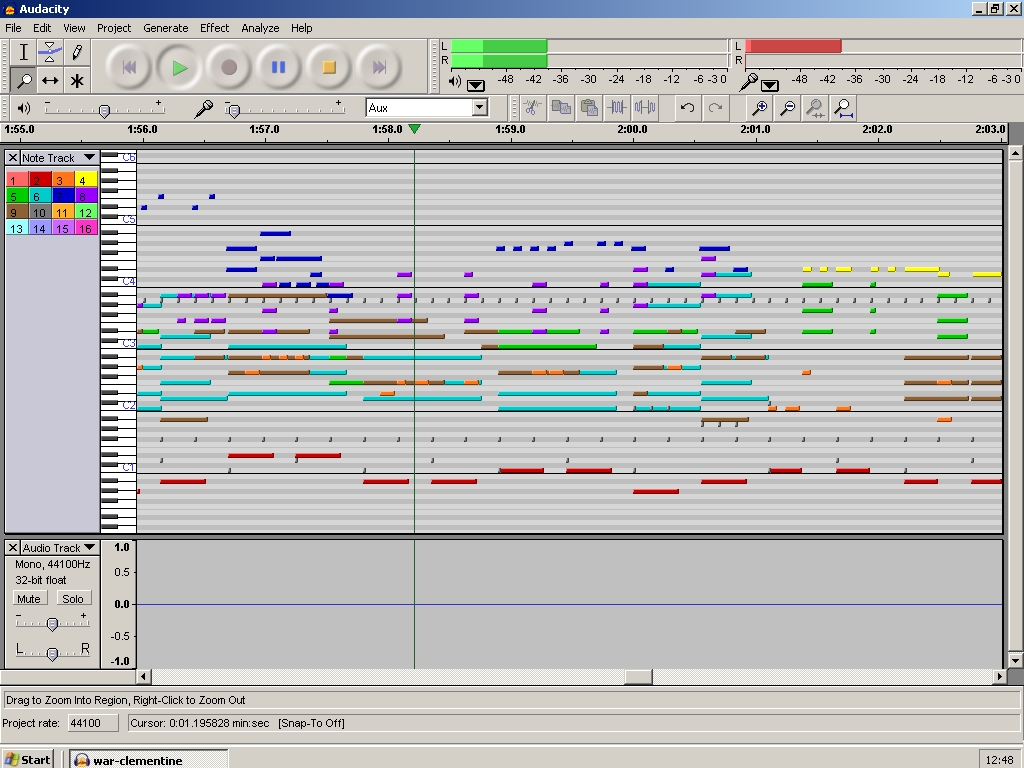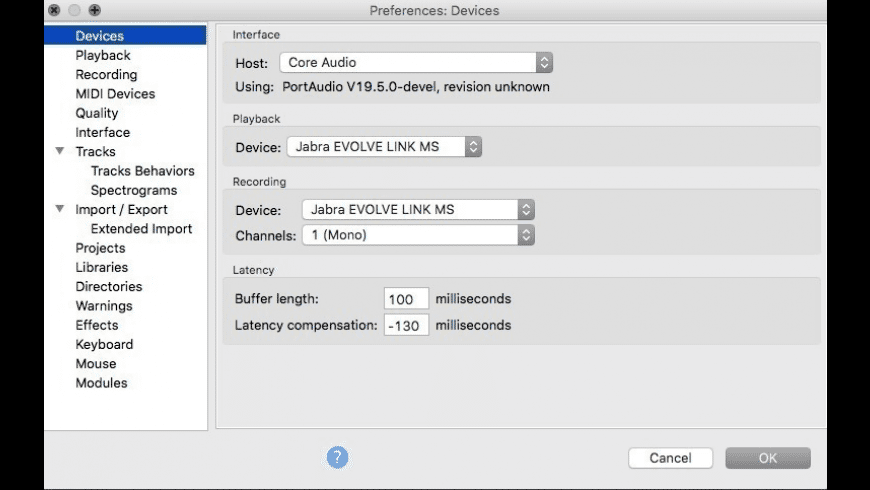As more and more members continue to inquire about, sign up for and put AudioAcrobat to the test, there continues to be a rising need for an inexpensive audio editing software solution. This ever-increasing interest in the removal of unwanted noises (coughing, intro/exit chimes, etc.) and unnecessary introductions/endings lends itself quite well to our #1 audio editing recommendation … Audacity.
- Audacity Download Mac Os X
- Audacity Free Download For Mac Os X
- Audacity 2.2.1 Download
- Audacity Os X El Capitan
- Audacity Audio Editor Free Download
- Audacity Osx Ffmpeg
In today’s posting we will take our readers through the steps of downloading, installing and setting up Audacity (yes, this includes Lame) for use on Mac OS X.
Audacity, Audio Hijack, and Ocenaudio are probably your best bets out of the 6 options considered. 'Free, open source and cross-platform' is the primary reason people pick Audacity over the competition. This page is powered by a knowledgeable community that helps you make an informed decision. Audacity download- http://www.audacityteam.org/download/mac/. Audacity was released in 2009 as a completely free recording software. And it’s still free today! Audacity is compatible with all operating systems and easy to download right away. Audacity is compatible with all operating systems and easy to download right away. It has everything you need to record audio on a timeline with no extra. Audacity is especially useful to audio producers who are just starting out, but electronic composers will find it useful, too. Garageband Even better, Garageband is free to OSX users, and rumors of a Garageband simulator for Linux users are afoot. Audacity for Mac is a powerful audio editing tool that surpasses default OS X tools. The downsides are a dated and sometimes clunky interface and a cumbersome installation process.
Audacity Download Mac Os X
For this tutorial, our readers will see snapshots of Mac OS X 10.6.8 (Snow Leopard), as installed on a MacBook Pro.
Where to get it … fast and cheap.
Audacity Free Download For Mac Os X

There are plenty of impostors out there on the web pushing their ‘free’ audio editing software. Some may even tell you that it’s Audacity, but don’t be fooled. There is one tried and true location to pick up your free download of Audacity, and that location has been, is and will continue to be in the foreseeable future http://audacity.sourceforge.net/.

Once the page has loaded, our readers will want to click the link for Mac OS X, as shown here:
When clicked, your internet browser may prompt you to open/save the file. If given the option, go ahead and click ‘Save’.
Once downloaded, our readers can pull up their “Downloads” folder from the Mac OS X taskbar at the bottom of their screen. Click the Audacity .dmg file to begin installation.
Here, our readers will want to copy the Audacity folder and paste the folder into the “Applications” folder (using Finder often helps).
Once pasted into the “Applications” folder, our readers can click the “Audacity” folder under “Applications”.
The folder will expand to display an Audacity program icon. Go ahead and click the icon to launch the Audacity program.
If the message seen below appears, our readers will want to make sure to select “Open” in order to continue.
To recap, Audacity has now been installed and is setup to perform a variety of audio editing tasks. However, a very common question will arise when new Audacity users are ready to output their 1st edited file in the MP3 format.
For training purposes, we’ll skip ahead to setting up Lame within Audacity, thus allowing for MP3 output from the software. Here are some quick steps to follow along with:
Note: Make sure to have an audio file open before starting this walk-through; otherwise ‘Export’ will not be an available selection.
1. File >> Export
2. Format >> MP3 Files >> Save
3. Edit Metadata >> OK
4. Click “Download”

A new window should launch in our readers’ internet browser, allowing the user to click the hyperlink below to download Lame.
Make sure to select the version shown below for Mac OS X.
Once downloaded, our readers can pull up their “Downloads” folder from the Mac OS X taskbar at the bottom of their screen. Click the Lame .dmg file to begin installation.

Audacity 2.2.1 Download
A folder containing the Lame .pkg file should appear. Go ahead and double-click the .pkg file to continue installation.

5. Install Lame
6. Click “OK”
Audacity Os X El Capitan
7. Pat yourself on the back >> Job well done!
Now, for each further export of an MP3 file, Lame is in place to make your request possible!
Audacity Audio Editor Free Download
Want to learn more about AudioAcrobat? Go ahead, give it a try yourself by signing up for a 30 day Free Trial or join one of our FREE Training Classes without signing up for squat. Already have an account? Login HERE.
Audacity Osx Ffmpeg
Coming up next … embedding AudioAcrobat players on a self-hosted WordPress site!
